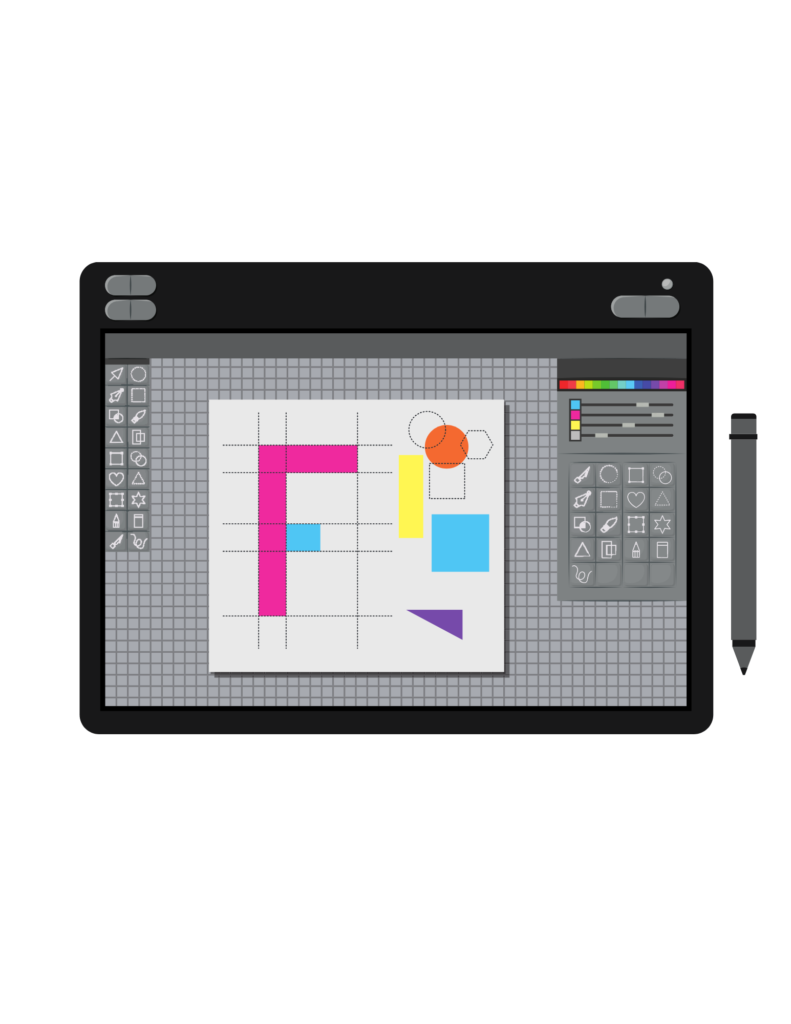
A logo is more than just a simple graphic; it is a powerful tool in marketing that plays a crucial role in building brand recognition, establishing trust, and communicating a company’s values. In the competitive world of business, an effective logo can differentiate a brand from its competitors and make a lasting impression on consumers. This article explores how a well-designed logo can become an essential marketing tool.
1. Creating Instant Brand Recognition
A logo serves as the face of a brand, making it one of the first things consumers notice. When designed effectively, a logo becomes synonymous with the brand it represents, making it instantly recognizable across various platforms and touchpoints. For instance, the swoosh of Nike or the golden arches of McDonald’s are easily identifiable, even without the brand name. This recognition is crucial in crowded markets where standing out can be difficult.
A strong logo helps consumers quickly associate it with the company’s values, products, and services. The more a consumer sees a logo in different settings, the stronger the brand’s presence becomes in their mind, ultimately increasing consumer recall.
2. Building Trust and Credibility
An effective logo establishes trust by creating a sense of professionalism and reliability. Consumers are more likely to purchase from a brand that has a well-designed, recognizable logo because it reflects a level of commitment to quality and consistency. A clean and modern logo design, for example, signals that a company is current and serious about its brand.
On the other hand, a poorly designed or outdated logo can send the message that a brand lacks attention to detail or professionalism, which could cause consumers to hesitate or even avoid making a purchase. As a marketing tool, a logo sets the tone for the rest of a company’s branding efforts.
3. Conveying Brand Message and Values
A logo is a visual shorthand for a brand’s identity and core values. The colors, typography, and symbols used in a logo can communicate a great deal about what a brand stands for. For example, blue is often associated with trust and reliability, which is why many financial institutions use it in their logos, while green is linked to nature and sustainability, often used by eco-friendly companies.
A logo can also represent the brand’s mission, vision, and story. Take the FedEx logo, which cleverly uses negative space to form an arrow between the letters “E” and “X,” symbolizing speed and precision—values that the company stands for. This subtle visual cue communicates the brand’s core mission in a way that words alone cannot.
4. Enhancing Emotional Connection
Logos can evoke emotions and create connections with consumers on a subconscious level. A well-crafted logo can foster positive associations that drive customer loyalty. For example, the heart shape in the logo of brands like Coca-Cola or the playful design of Disney’s logo can stir up feelings of joy, nostalgia, or excitement.
When a consumer connects emotionally with a logo, they are more likely to develop a deeper bond with the brand. This emotional attachment can lead to long-term brand loyalty, where customers return time and again to the brand not just for its products, but also because of the positive feelings the logo evokes.
5. Differentiating the Brand in a Competitive Market
A logo is a key differentiator in a crowded marketplace. In industries where products and services may be similar or even identical, a strong logo can set a brand apart from its competitors. By being distinct and memorable, a logo helps a brand create a unique identity that resonates with consumers.
Take, for example, Apple’s logo. It’s minimalist, sleek, and instantly recognizable, helping the brand stand out in the tech industry. While many companies sell similar products, Apple’s logo contributes to its premium image and reinforces its position as a leader in innovation.
6. Ensuring Consistency Across Marketing Channels
A logo helps maintain consistency across all marketing materials, which is crucial for building a unified brand presence. Whether it’s on websites, social media, business cards, or advertisements, a logo serves as the constant that ties all marketing efforts together.
Consistency in logo usage ensures that consumers have a unified experience across all touchpoints. When the logo appears in various formats, it reinforces brand identity and makes the brand feel cohesive, whether in a digital ad, a physical storefront, or a TV commercial.

